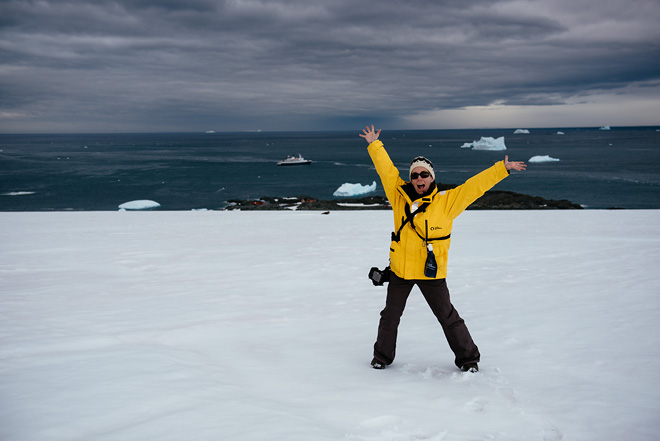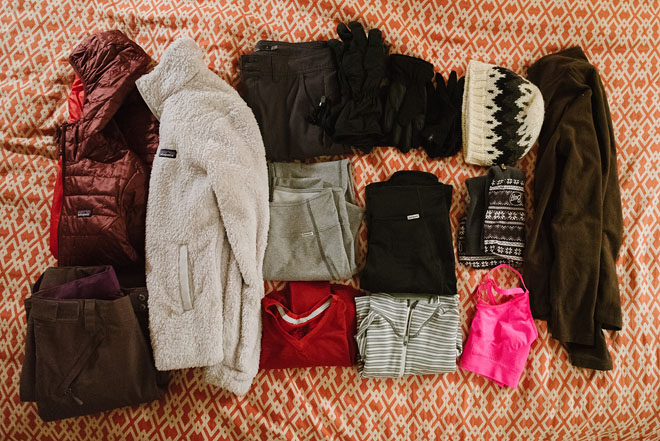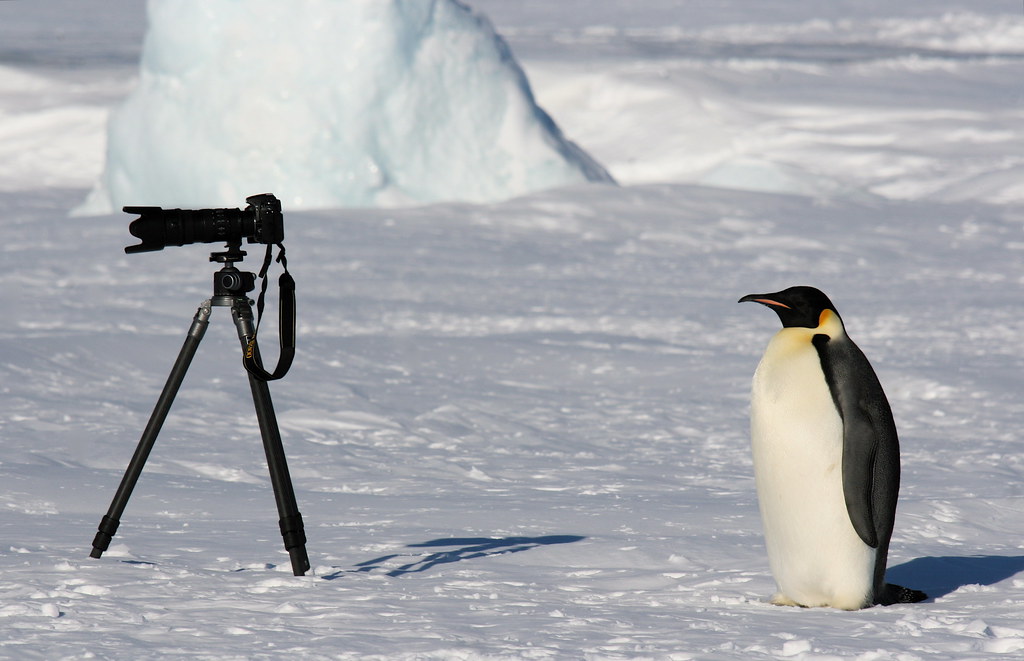A post about how my packing worked out.
I always have a hard time packing for weather that I’m not in right at that very moment, and this was the ultimate “hard to imagine what I’ll feel like wearing” trip. It was mainly a case of making sure I had the right layers.
Here’s the post where I first detailed my packing list, if you want to look back: Layers, layers, layers
So how did it all work out? Did I pack the right things?
Nano puff jacket. (Patagonia Nano Puff) Never really needed this. I brought this onto shore on all our landings just in case, so it was nice to have something that packed down small. Jeff wore his as his outer layer a few times on the deck of the ship instead of the big yellow parka.
Ski pants. (NorthFace insulated ski pants) Perfect. Kept me warm and dry, no complaints.
Fuzzy warm fleece jacket. (Patagonia Los Gatos fleece jacket) I didn’t really need this. It just wasn’t that cold.
Hiking pants. (Prana Halle pant) These are what I wore on the ship between landings and on sea days. I’d just switch out of the ski pants into these, over a pair of long underwear.
Gloves. (Freehands photo gloves—these ran really small so I needed a large.) My photo gloves were perfect. Kept my hands warm and I loved being able to just let my index finger and thumb peek out to work the camera controls. I had a backup pair of waterproof gloves with me but never needed to use them. I also packed some Smartwool liners, thinking these might be good for working the camera and still protecting me from the cold a little, but I never wore these.
Long underwear bottoms. (Patagonia capilene) Two pair of Patagonia capilene, one cap 4 (expedition-weight) and one cap 3 (medium-weight). Two pairs was plenty. I washed them out in the sink a couple of times. They did a great job of keeping me warm and dry. I definitely worked up a sweat on some of the hikes, and the long underwear never even felt damp.
Long underwear tops. Two Patagonia tops, one cap 3 and one cap 2. Same as with the bottoms. Great performance, dried fairly quickly when I washed them out in the sink, too. Two tops were enough.
Fleece. (Basic fleece from the Gap that I’ve had for years, so no link.) I wore this as my top layer onboard the ship, and then wore the yellow parka (which also has a fleece lining) over it when I was outside. Plenty warm outside in these layers.
Fleece-lined wool hat. Worked great. Sometimes was hot when I was hiking, so I’d take it off and put it in a pocket.
Polar buff. (Fleece buff) Could be used in lots of ways, but I never used mine even once. Jeff wore his as a hat/face covering as you can see above.
Sports bra. (Under Armour sports bra) So glad I had this. Like I said, I broke a sweat on several hikes, so it was nice to have wicking material next to my skin.
Smartwool ski and hiking socks, plus liners. (Smartwool) Never needed the liners. The smartwool socks were plenty warm on their own.
Underwear. I packed enough for a new pair everyday without needing to wash any on the trip.
Swimsuit. For the polar plunge!
Sunglasses, two pairs. In case I lost one.
Hiking shoes. These are the only shoes I brought. They worked well for hiking in Tierra del Fuego NP in Ushuaia and had good traction for wearing on the ship’s deck.
I also packed a pair of jeans and a couple regular long-sleeved shirts for wearing before & after the trip. If I’d really needed the space, I could’ve skipped these, but there was no reason to, as I had plenty of space in my pack.
So that’s it for my clothes. We packed everything in soft-sided luggage (backpacking packs) because we weren’t sure what space in our cabin would be like. As it turned out, there was space under the beds, so we could’ve stored hard-sided suitcases there with no problem.
Other things I packed:
Hothands hand warmers. Never used these.
Vicks. I’d read that penguin poop really stank, so I brought this to put under my nose to kill the smell. But I never really noticed a bad smell other than on one landing (Neko Harbour), and even then it wasn’t bad enough that I felt like I needed Vicks.
Sunscreen. Besides that the snow is reflecting the UV rays, there’s a hole in the ozone layer above Antarctica. The good thing is, you’re so covered up in clothes that really the only exposed skin is your face, so you don’t need a ton of sunscreen.
Phenergan, SeaBands, Dramamine. I was determined to be prepared for whatever the Drake threw at us. In the end, only the phenergan helped me at all. I was so glad to have this!
Woolite travel laundry soap. These are what I used to wash out my long underwear in the sink.
I think that’s everything. In a real pinch you could probably buy everything you really needed from the ship’s gift shop, although you wouldn’t have many choices. But they did seem to stock all of the essentials, so if you forgot something, you wouldn’t be completely out of luck.




